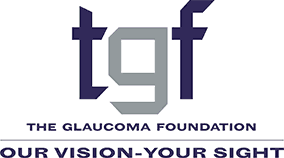~Preservative-Free Glaucoma Eye Drops~

It is estimated that roughly half of all patients on long-term glaucoma therapy suffer from ocular surface disease (OSD), which includes dry eye syndrome. OSD can cause redness, tearing, irritation, burning, foreign body sensation, light sensitivity, and sometimes blurred vision.
One of the issues is that all multi-dose ophthalmic medications are required to have a preservative to maintain the antimicrobial environment in the bottle. While OSD can be caused by active ingredients in a particular glaucoma eye drop, it’s widely known that the preservative benzalkonium chloride (BAK) used in many drops can affect the ocular surface. In fact, the prolonged use of eye drops preserved with BAK is a strong risk factor for ocular surface disease in patients with glaucoma. And patients who must use two or more medications have worse OSD.
There is an acknowledged need for the pharmaceutical industry to continue addressing BAK-free options, minimizing OSD, and improving patients’ quality of life as well as adherence to their medication regimen.
These products fall into two categories: BAK-free preserved medicines (using alternative preservatives to BAK) and preservative-free medicines.
There are currently three preservative-free medications available in the United States. Two other drugs use alternative preservatives. The three available topical glaucoma medications completely free of preservatives are: Zioptan (tafluprost ophthalmic solution 0.0015%, Cosopt PF (dorzolamidetimolol ophthalmic solution 2%/0.5%, and Timoptic in Ocudose (timolol maleate ophthalmic solution 0.25% and 0.5%. The FDA has just approved the first formulation of latanoprost, Thea’s lyuzeh. Generic versions of preservative-free Zioptan, Cosopt, and preservative-free Timoptic are also available.
Each of these products is supplied as a sterile solution in single-use containers. Once the vial is opened, the patient should apply the medication to the eye, and then immediately should discard the container and its remaining contents. Patients with poor dexterity may have difficulty handling small containers. And the risk of contamination is a concern if a patient saves excess solution for later.
The two BAK-free products that use other preservatives and aim to reduce toxicity to the ocular surface are Travatan Z (travoprost ophthalmic solution 0.004%, preserved with SofZia, and Alphagan P (brimonidine tartrate ophthalmic solution, 0.1% or 0.15%, preserved with Purite.
